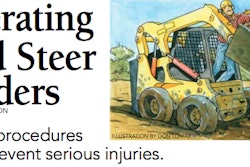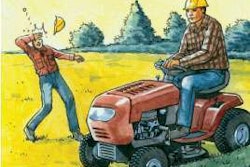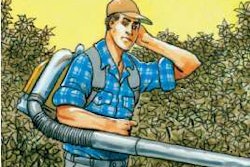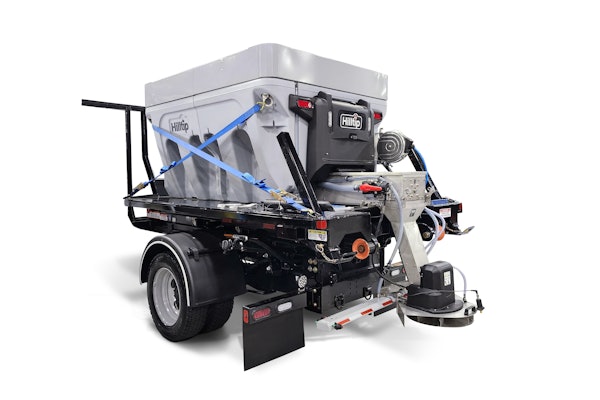Tips for accident prevention
By Carolyn Mason
The accident: A landscaping company in upstate New York has three new employees helping with snow removal. Two workers shovel snow from a walkway while the other, a 36-year-old man, operates the snow blower. Seven inches of heavy, wet snow have accumulated and the temperature is 28 degrees when the equipment jams. The operator turns off the engine and reaches inside the exit chute to dislodge packed snow. He is wearing heavy gloves, and the still-rotating blades grab the gloves and mangle his fingers. His middle finger is severed and four others severely cut and bleeding when he removes the glove. He is transported to a nearby hospital, where doctors were unable to re-attach his finger.
The bottom line: Most snow blower accidents occur when an operator attempts to unclog the machine with his hands. It takes about 10 seconds for the impeller blades to stop rotating after the engine is turned off. More than 5,700 emergency room visits stem from snow-blower accidents, with around 590 of them requiring finger amputations, according to the U.S. Consumer Product Safety Commission.
Here’s how to prevent accidents:
• As with any equipment, always read the manual before operating a snow blower. If you don’t understand any of the safety hazards and procedures, ask your employer for help.
• Know how to turn the engine off quickly.
• Never put any part of your body in the machine. If snow or debris jams the chute, stop the engine and wait at least 20 seconds. Then, use a solid object such as a stick or broom handle to clear wet snow or debris.
• Turn off the engine if you have to leave the machine unattended.
• If you are operating an electric snow blower, always be aware of the cord’s location.
• Never start and run gasoline-powered snow blowers in an enclosed area. Always start and operate outside to prevent carbon monoxide poisoning.
• Never wear loose clothing or scarf that can be pulled into the snow blower’s rotating parts.
• Wear hearing and eye protection.
• Never modify or disable any part of a snow blower.
• Make sure the discharge chute is not aimed at passing motorists or pedestrians.
• Never clear snow while operating the machine across the face of a slope. Operate up and down the slope instead. Always turn toward the down side, when turning on a sloped area.
• Add fuel before starting the snow blower. Never add fuel when the engine is running or hot. Wait until the engine is cool before refueling.
• If you or a co-worker severe fingers, toes or a foot, don’t put the severed digits or limb directly on ice. Instead, wrap them in plastic and place in a plastic bag filled with ice for transportation to the hospital.










